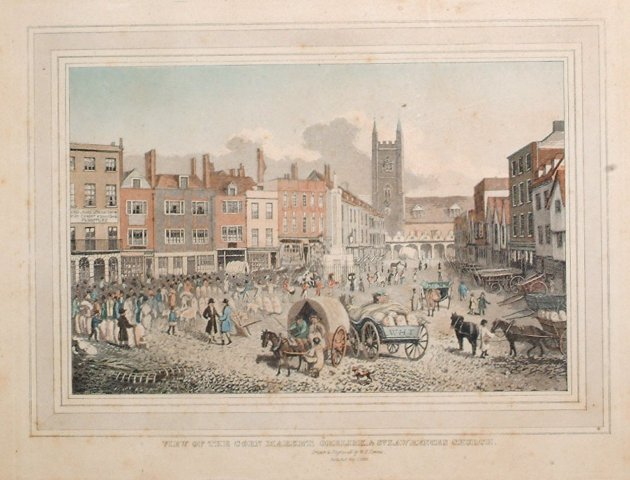The early modern period
During the Middle Ages, there was another large and important abbey in Berkshire at Abingdon. Reading was in competition with Abingdon for the role of pre-eminent town in the county during much of this period. Newbury was another important urban centre. All three were market towns where nearby farmers brought their produce to sell. They were also manufacturing centres that produced goods such as shoes, nails and barrels.
Dissolution of the abbey
In the first half of the sixteenth century, the steady economic life of the town was disturbed by the dissolution of the abbey. What Henry I gave to the town, Henry VIII decided to take away. Suddenly the dominating player in the town's economic life was gone. The abbey building was dismantled and its stonework used to patch up housing in the town - good building stone is rare in the area. The cathedral-sized church was soon gone, too.
The second half of the sixteenth century saw Reading boom as a wool-cloth manufacturing town. Weavers would set up a loom (or possibly two, though they were complicated and expensive machines to buy) in their house and used wool from sheep grazing on the Berkshire Downs to produce a variety of cloths.

Market Place, 1823. Before the coming of the railway Reading's main significance was as the market town for central Berkshire. Carriages can be seen taking people from Reading to Oxford, where we see the bus stops today! (museum no. 1931.59.3)
A well-established market centre
The cloth-weaving boom continued into the seventeenth century, though it never really flourished after the Civil War. Despite this, Reading grew into a well-established market town. It might not grow, but it could rely on a steady stream of local visitors bringing goods to buy and sell. There were also regular sessions of the Crown Court in the town and this helped it retain its administrative significance.
This situation continued through the eighteenth century. Reading was a middling sort of place - a market and administrative centre. The transformation of the River Kennet into a canal linked the town with Newbury (1723) and eventually Bristol (1810). This enabled heavy goods (from stone to malt) to be carried large distances with relative ease. The town had always been linked by water to London and the carriage of goods to and from the capital had been part of its economic life from the foundation of the abbey.
The coming of steam power
Many of the technological innovations that were to transform the economic life of the country originated in the eighteenth century. Richard Arkwright, for example, opened his famous water-powered spinning factory in Derbyshire in 1771. James Watt began producing steam engines for use in mines in the 1760s. Watt worked in the Birmingham area, and by the late eighteenth century the population of this town had reached 90,000 people. Reading was far from this industrially vibrant area, with a population of about 9,000. Neither did it have raw materials, such as coal or iron, that were important to feed the rapid industrial growth of towns like Birmingham.
Workers' protests and the arrival of the railway
The first hint of the age of steam in the Reading area was ominous. In the 1830s, the threat to the livelihood of agricultural labourers posed by steam-powered threshing machines sparked numerous riots. Machine-breaking and rick-burning occurred in many villages around Reading. Many people were arrested. Some were transported and one man was hung.
Soon after this, the railway arrived in Reading in 1840. The fate of Reading's canal links, only completed in 1810, was sealed as the railway was so much faster. On 30 March 1840, crowds filled Reading's Forbury Gardens to watch the first trains shunt into the new station. Travelling from Reading to London by train took little over an hour. A year later, in June 1841, the railway line extended to Bristol. The 'Age of Steam' was officially here. Next, we explore Reading's nineteenth century boom.





